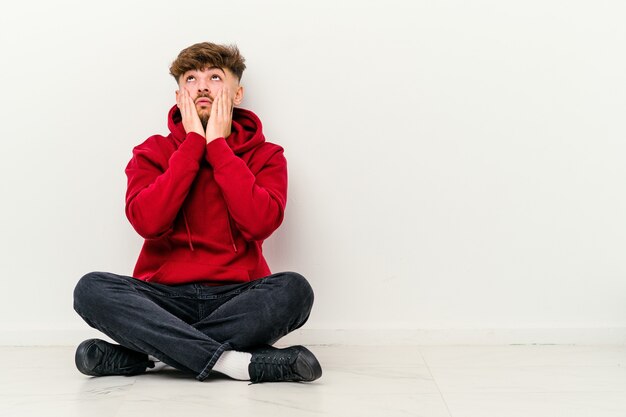Understanding Breathlessness and Anxiety: A Deep Dive into the Connection
Imagine sitting in a calm room, yet your chest tightens, and each breath feels like a mountain to climb. If this paints a familiar picture, you might have experienced breathlessness caused by anxiety. It’s a distressing phenomenon, common yet often misunderstood. Here, we unravel this mystery, weave in the science behind it, and guide you on what you can do when faced with such an overwhelming feeling.
The Breathless Connection: Anxiety Meets Physical Symptoms
Anxiety is more than just a mental challenge; it potentially manifests in physical ways that are perplexing to many. Breathlessness, medically termed dyspnea, is one such prevalent manifestation.
How Anxiety Triggers Physical Responses
When anxiety hits, the body's natural "fight or flight" response is activated. This response is an ancient mechanism, originally designed to protect us from immediate survival threats. Nowadays, it's often triggered by stress that's more psychological than physical. When anxiety strikes:
- The adrenal glands release hormones like adrenaline.
- Heart rate and blood pressure increase to prepare the body to face a threat.
- Breathing becomes rapid and shallow, maximizing oxygen supply to the muscles.
As a result of this physiological cascade, the sensation of breathlessness can emerge. Your breathing may quicken to the point of hyperventilation, which paradoxically reduces carbon dioxide levels in the blood, further exacerbating feelings of breathlessness and dizziness.
Differentiating Anxiety-Induced Breathlessness from Other Causes
It’s crucial to distinguish whether breathlessness is a symptom of anxiety or rooted in other medical conditions. Conditions such as asthma, chronic obstructive pulmonary disease (COPD), and cardiovascular issues also cause breathlessness. Pay attention to:
- Triggers: Anxiety-induced breathlessness often coincides with stress or panic.
- Duration: It might be episodic, coinciding with anxiety episodes.
- Accompanying symptoms: Anxiety attacks are often accompanied by sweating, racing thoughts, and palpitations.
The Mind-Body Loop: Understanding the Cycle
Anxiety and breathlessness can create a vicious feedback loop. Feeling breathless can increase anxiety levels, which in turn exacerbates the sensation of breathlessness. Understanding this cycle is the first step in managing it.
Break the Cycle of Breathlessness
- Awareness: Recognize when anxiety is starting to affect your breathing.
- Breathing exercises: Techniques such as deep diaphragmatic breathing help regulate the oxygen and carbon dioxide balance in the body, breaking the hyperventilation cycle.
- Cognitive reframing: Challenging irrational thoughts that fuel anxiety can reduce symptom severity.
Addressing Anxiety through Mindfulness and Relaxation Techniques
Mindfulness and relaxation techniques are fundamental in managing anxiety and related breathlessness. These practices equip you with tools to reclaim control over both mind and body.
Effective Mindfulness Strategies
Practices like mindfulness meditation and progressive muscle relaxation not only calm the mind but also the body, mitigating the anxiety that leads to breathlessness.
- Mindful breathing: Focus on slow, regular breaths. This practice reduces stress hormones and signs of anxiety.
- Body scan meditation: Increases awareness of bodily sensations and promotes relaxation.
Consider Integration into Daily Life
- Routine practice: Incorporate short sessions of mindful breathing throughout your day to manage ongoing stress.
- Use apps or guided meditations: These tools can offer accessible means to maintain a consistent relaxation practice.
Behavioral Change and Lifestyle Factors
Beyond psychological strategies, simple lifestyle changes can significantly influence anxiety levels and associated symptoms.
Importance of Physical Activity
Exercise remains a powerful tool for managing anxiety. It boosts mood-regulating hormones and minimizes symptoms such as breathlessness by improving cardiovascular health.
- Regularity: Aim for at least 30 minutes most days of aerobic exercise to reap anxiety-reducing benefits.
- Mindful movement: Yoga or tai chi combines physical activity with meditative practices, providing a double benefit.
Sleep Hygiene and Diet Considerations
Quality sleep and balanced nutrition are essential in fostering a calm mind.
- Sleep management: Ensure 7-9 hours of restful sleep. Build a bedtime routine that minimizes caffeine and screens.
- Balanced diet: Foods rich in omega-3 fatty acids, magnesium, and vitamin B6 can support neurological health and anxiety reduction.
Seeking Professional Guidance
While self-management techniques are valuable, they are sometimes insufficient. Knowing when to seek professional help is vital.
Mental Health Support Systems
- Therapies: Cognitive-behavioral therapy (CBT) effectively reduces anxiety, providing skills to manage symptoms.
- Professional assessment: Clinicians can help rule out other medical issues and guide you to the most appropriate treatment plan.
Building a Support Network
Isolation can exacerbate anxiety symptoms, making social support an invaluable asset.
- Talk about it: Sharing with friends, family, or support groups can provide relief and additional coping strategies.
- Therapeutic communities: Engaging in shared experiences helps to navigate mental health challenges collectively.
Final Reflections: Navigating Breathlessness and Anxiety
Breathlessness as a result of anxiety is not an issue one must face alone. By understanding the triggers and practicing active management strategies, you can regain control over these experiences.
Remember:
- Recognizing anxiety's physical manifestations, such as breathlessness, is the first step.
- Mind-body techniques provide effective means to manage these symptoms.
- Professional support and lifestyle changes play pivotal roles in alleviating breathlessness and its root causes.
Whether through self-management or professional guidance, every effort counts in reducing anxiety and its overwhelming physical sensations.
Summary: Empowering Strategies for Managing Anxiety-Induced Breathlessness 🌬️
- 📌 Awareness: Identify anxiety triggers and their physical manifestations early.
- 📌 Breathing Techniques: Practice diaphragmatic breathing to counteract quick, shallow breaths.
- 📌 Mindfulness and Meditation: Incorporate regularly for mental and physical grounding.
- 📌 Physical Activity: Engage in cardiovascular exercises to boost mood and reduce anxiety.
- 📌 Balanced Routine: Maintain healthy sleep patterns and diet to support mental health.
- 📌 Professional Help: Seek guidance when self-management is not enough.
- 📌 Support Networks: Lean on friends and communities for shared coping strategies.
